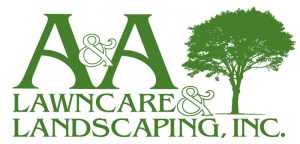
Lawn Damage
Chinch bugs are known for ravaging otherwise healthy lawns. Their damage becomes apparent when a lawn takes on drought-like symptoms (regardless of the amount of rain your area has received). Only upon close inspection of the grass are chinch bugs visible. The damage they cause is from sucking the moisture out of the grass blades before injecting them with a poisonous toxin. This destruction can be contained to patches, but it can kill entire lawns, too. To save your lawn, it’s important to act immediately once you’ve discovered an infestation.
Identifying the Chinch Bug
Chinch bugs are tiny, measuring about 1/5″ in length. This makes them difficult to spot with the naked eye. Here are two methods for confirming the presence of chinch bugs in your lawn are by getting on your hands and knees to look eye level with where your grass meets the soil. This is where you’ll spot chinch bugs at work, eating away at the base of your grass blades. If getting on your hands and knees isn’t an option, there is another way to detect a chinch bug presence. Create a tube by cutting off both ends of a coffee can and push it into the soil so it goes a few inches into the ground. Next, fill it with water. If there are chinch bugs in your soil they’ll eventually start to float to the surface.
Treatment for Chinch Bugs
After you have determined you have a chinch bug infestation, you can treat the infestation with an insecticide product.
- Removing any excess thatch is a good idea before applying any products, since products need to reach where the chinch bugs are feeding.
- Applying in early summer will help to kill the active nymphs before they mature into adult chinch bugs and mate again to produce the overwintering generation.
- Products with synthetic pyrethroids are common. While they come in liquids and granules, liquid formulas are often preferred because the liquid has a better chance of reaching deep into the soil.
- Make sure to read the label very carefully and follow all application instructions. Most chinch bug product applications must often be watered in thoroughly so they can reach the feeding layer of the chinch bug
We have seen first-hand the damage that chinch bugs can do. Let us help you identify and fight an infestation.
Contact Us (859-384-0266) for a Free Consultation!
—
 About A & A Lawn Care & Landscaping
About A & A Lawn Care & Landscaping
A & A Lawn Care & Landscaping can beautify your lawn and landscaping using our vast experience in turf grass management. Our complete lawn service is designed for both residential and commercial lawns and we keep your lawn healthy without harming your family, staff, or pets.

 About A & A Lawn Care & Landscaping
About A & A Lawn Care & Landscaping